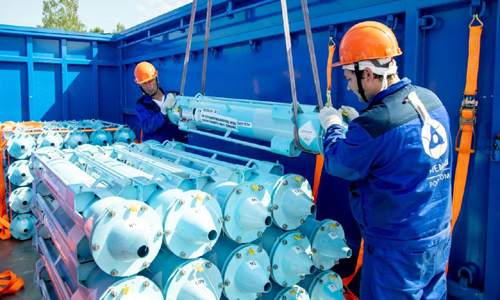
The unit-2 of the world’s only Floating Nuclear Power Plant (FNPP) Akademik Lomonosov is set for its first re-fueling. The floating NPP is stationed in the Pevek region of Russia. The first re-fueling of unit-1 took place at the end of 2023. The floating plant is based on two KLT-40S reactors. Rosatom’s fuel division has manufactured fresh fuel for the unit.
Re-fueling of these kinds of small reactors differs from the same in conventional ground-based high-power units, which are partially re-fuelled every 12-18 months. Reactors of floating NPP reactors require refueling once in several years with unloading of the entire reactor core and complete replacement with fresh fuel.KLT-40S core consists of fuel assemblies, control rods, and startup neutron sources.
Fuel assemblies have received necessary approval for loading into the unit-2 reactor, from the concerned Russian Maritime Register of Shipping. The body is authorized to accept nuclear fuel for this kind of reactor.
Akademik Lomonosov is the world’s first floating nuclear power plant. Its commissioning marked the beginning of the era of transportable small power units. Akademik Lomonosov’s reactors were first connected to the power grid in December 2019 and put into commercial operation in May 2020. The plant generates about 76 MWe for Pevek coastal network and its maximum heat capacity is about 44 MW. It is capable of meeting the power demand of a city with a population of up to 100,000 people.
Nowadays, dozens of countries and regions are showing their interest in such power units because of their lower investment cost, less construction time, movability, longer re-fueling time, ability to supply carbon-free power to remote and difficult-to-access areas, etc.